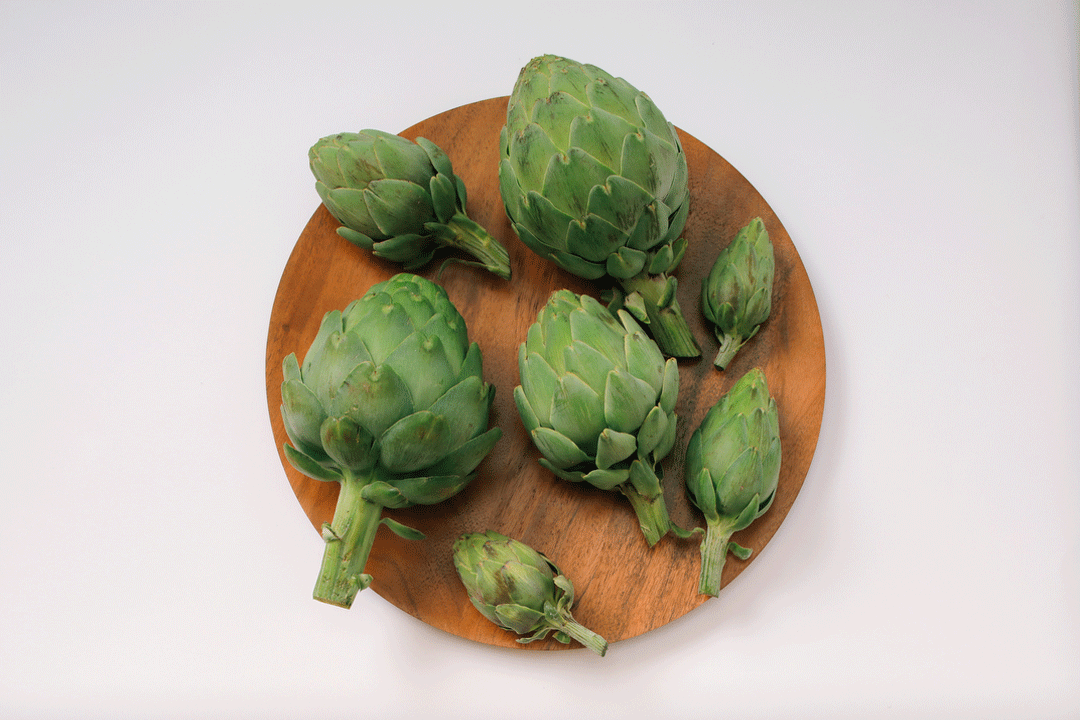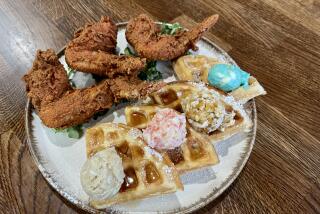Peanut Brittle: It Can’t Be Too Rich or Too Thin
- Share via
Every Christmas season, the Rev. Laurie Bilyeu gets a little homesick for her childhood home in Central Illinois. Her congregants at Neighborhood Church in Pasadena know when this nostalgia is upon her because she begins talking about her grandmother’s peanut brittle.
Every year, they hear about Maude Reichart’s very thin peanut brittle, which was made in great quantities for the family and to fill orders for the people of Sangamon County. Once Bilyeu even began a sermon with the bold statement, “My grandmother made the best peanut brittle in the world.”
Finally, some of the congregants prevailed upon her to teach them how to make this famous confection. And now, making peanut brittle has become a Neighborhood Church tradition.
Still, Bilyeu frets that it never gets cold enough in Southern California, and coldness is essential for the brittleness in peanut brittle. She also misses her grandmother’s sweet well water. Nothing, she claims, tastes quite like Grandma Reichart’s peanut brittle chased with cold, fresh well water.
Making peanut brittle requires heavy saucepans, a large porcelain surface, lots of time and, briefly, many hands.
“In November and early December, as it got cold enough,” Bilyeu says, “Grandma would assemble a combination of daughters and grandchildren in the kitchen of her little farm house. . . . She’d pull the old porcelain counter top in from the back porch. It had to be porcelain. Marble holds the heat too long.”
First, the sugar, water and corn syrup must heat to 260 degrees, which seems to take forever--or at least half an hour. Then the margarine and raw peanuts go in, and the mixture, stirred constantly, must reach 290 degrees, or the hard-ball phase.
The long stretches of waiting are filled with talk and turn-taking at the stirring. The porcelain surface is set out and greased. Knives and hands are greased. When the peanut mixture is finally hot enough, it is pulled off the stove and the vanilla and baking soda are added.
It’s always dramatic when the baking soda is added--the mixture turns blond and opaque and foams up. Once the baking soda really expanded and spilled over, creating a nightmarish mess over the stove. For this reason, Bilyeu says, it is important to take the mixture off the stove before adding the soda.
One time the soda and vanilla are mixed in, the mixture is poured over the buttered porcelain and the many buttered knives--and hands--go to work, pulling at the edges to stretch the candy as thin as possible.
It’s OK if holes form--the whole batch will be broken into smaller pieces anyway. The brittle will cool and go through a supple stage, when it can be pulled further with fingers, as Bilyeu says, “into that thin, thin, brittle candy, the thinness broken only by the lumps made by the peanuts.”
When the perfect degree of thinness was reached in Maude Reichart’s Illinois farmhouse kitchen, she would say to her not-yet-a-minister granddaughter, “Throw open the back door, Laurie Kay,” and the cold Midwestern air would gust in to leach out the last traces of heat in the candy and thus guarantee the perfect degree of brittleness.
This year in the church kitchen, throwing open the door ushered in no chill winds at all. Still, to the candy makers there, the peanut brittle seemed perfect: golden, fragrant, fragile as glass.
As the candy was broken into smaller pieces, Bilyeu glanced out the window.
“This is about when the men start arriving,” she said prophetically. And sure enough, several men strayed in seemingly out of nowhere and helped themselves.
GRANDMA REICHART’S PEANUT BRITTLE
Laurie Bilyeu says: “Always use name-brand ingredients. We tried cheap sugar once. It didn’t work.
“If there are too many hulls on the peanuts, blow them off [outside]. Better yet, buy them with no hulls. [Health food stores are good sources.]
“Don’t hurry the cooking or the sugar will burn.
“Measure peanuts in a large bowl and put the margarine on top ready to toss in.
“Let candy cool completely before storing.”
Cooking spray
Margarine
3 cups sugar
1 1/2 cups water
1 cup white corn syrup
2 cups raw peanuts
1 teaspoon vanilla extract
1 tablespoon baking soda
Spray large porcelain or stainless steel surface with cooking spray. Then smear it generously with margarine. Coat several knives (as many knives as helpers) with margarine.
Combine sugar, water and corn syrup in large saucepan and cook over medium-high heat, stirring constantly, to 260 degrees. Just before temperature reaches 260 degrees, reduce heat to medium and add peanuts and 1/2 cup margarine. Stir constantly until mixture reaches 290 degrees. Remove from heat and add vanilla and baking soda. Stir well.
Pour hot mixture in “blobs” onto greased porcelain or stainless-steel surface. Using coated knives (then fingers as the candy cools) stretch candy. Starting at edges and keep working, sliding knives under candy to make sure nothing sticks. Pull candy very thin.
Makes about 2 pounds.
Each 1-ounce serving contains about:
181 calories; 44 mg sodium; 0 cholesterol; 8 grams fat; 27 grams carbohydrates; 2 grams protein; 0.44 gram fiber.
More to Read
Eat your way across L.A.
Get our weekly Tasting Notes newsletter for reviews, news and more.
You may occasionally receive promotional content from the Los Angeles Times.










